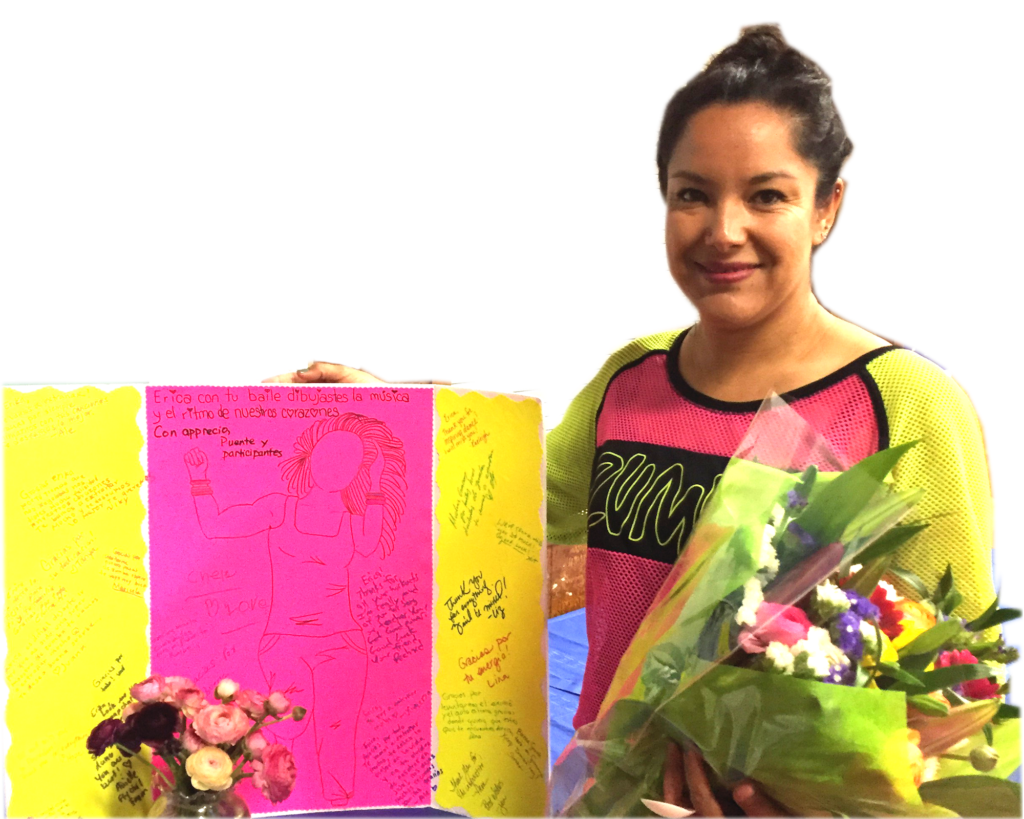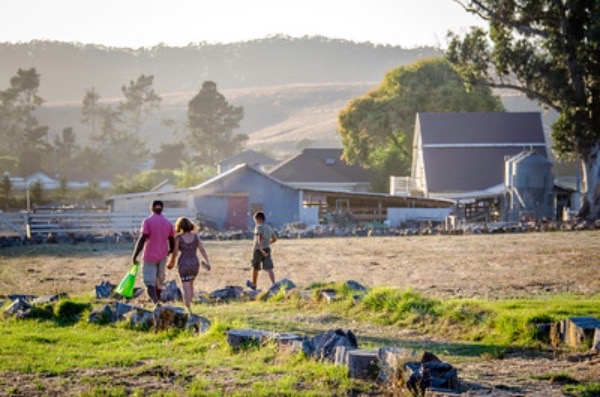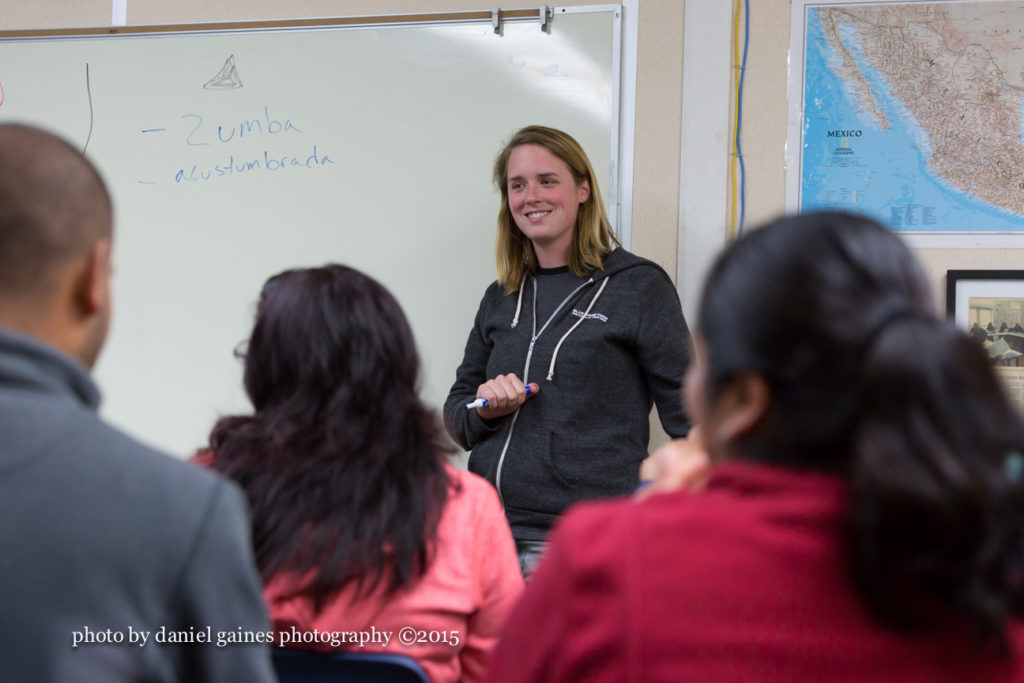 On Tuesday evenings, the music booms out of the elementary school multi-purpose room. Inside, women of all ages and a few brave men are sweating and smiling as they jump, squat, shimmy, and dance their way around the gym. A woman in a bright patterned t-shirt and neon green leggings is leading the charge at the front of the room, clapping and encouraging everyone. Welcome to Erika’s Zumba classes. Erika is a Pescadero Zumba sensation who weekly inspires her community to get moving, one shake and shimmy at a time.
On Tuesday evenings, the music booms out of the elementary school multi-purpose room. Inside, women of all ages and a few brave men are sweating and smiling as they jump, squat, shimmy, and dance their way around the gym. A woman in a bright patterned t-shirt and neon green leggings is leading the charge at the front of the room, clapping and encouraging everyone. Welcome to Erika’s Zumba classes. Erika is a Pescadero Zumba sensation who weekly inspires her community to get moving, one shake and shimmy at a time.
Zumba – an hour-long class of choreographed dance moves designed to get heart rates up – is now nationally known as one of the most fun ways to do cardio. Zumba involves dance and aerobic movements performed to energetic music. The choreography incorporates hip-hop, soca, samba, salsa, merengue and mambo.
Erika first start attending Zumba in 2010 when it began at Puente, and says that even though she always wanted to be in the front to learn the steps, she was always shy and didn’t initially see herself as an instructor, as a leader. But when Puente needed more instructors in 2013, she decided just to go for it. “My first class,” she says, “I didn’t want people to look at me, but now, I make eye contact and acknowledge people when they come to the class and we connect.”
Studies show that Zumba is an effective way to increase aerobic fitness, the kind that keeps hearts healthy, reduces blood pressure, and can help prevent or manage diabetes and other chronic disease. Participants have talked about losing a little weight and becoming more confident in walking and jogging as they build regular exercise habits.
And yet, although the health benefits of regular cardio are undeniable, what strikes one most as you walk into the room is the community. Most nights, three generations of community members are dancing, from babes in arms to grandmothers, elementary and high school students, moms, dads, and more. There are old friends, and there are new friends. But being part of this active community goes deeper. Beyond the laughing and the dancing, Zumba is part of a number of programs Puente offers to decrease isolation and has even been shown to help with maternal depression. Although not everyone understands Spanish, Erika makes sure that everyone feels welcome to join, and to dance in whatever way they feel inspired, as long as they move!
Erika notes, “I feel like I am a source of support for people. I volunteer because I know people count on me.” The program is entirely volunteer-run, with administrative, management, childcare and outreach support from Puente, and classes run twice a week in Pescadero and once a week in La Honda. A core group of 15-20 comes every week to Pescadero, and 5-10 come every week to La Honda. Since its inception in 2010 in Pescadero and almost two years ago (July 2015) in La Honda, nearly 140 adults have been two-stepping their way to health and many more children have learned about healthy exercise habits by joining in the fun.
Zumba in La Honda is gaining traction too. Instructor Siobhan Togliatti says that although the core group is small, they are mighty, and dedicated! They meet every Wednesday night in the La Honda Elementary School Gym to enjoy all the same benefits – a dance party and a chance to connect with neighbors whom you may not see regularly otherwise.
Erika and her family are moving to Sacramento in April, and nearly 40 people descended on the gym last Tuesday to celebrate and attend her last class. Although Erika’s energy and warmth will be missed tremendously, her legacy in the community will be felt for years. Three other volunteer Zumba instructors have stepped up to cover Erika’s classes while a few other community members get trained.
Erika says, “Health is something that I didn’t really grow up hearing about. My advice to people who want to get healthy or start moving more is to use what you have, and do something you enjoy. Go for a walk, ride a bike, go to the beach – you don’t need a gym. Use what you have available to you!” Not only are her fellow adults taking this to heart, but also the youth who watch and join in the classes are learning lifelong ways to stay active and healthy. Two high school students have already been trained as instructors and will help teach classes during the summer. They bring a new flair to the floor.
And Erika’s hope for the future of Zumba in Pescadero? More classes and more instructors! “What we have started here has to keep going,” she says. Together, they are bringing people together and creating new kinds of healthy community habits, one that is just plain fun.
Puente’s Zumba program is supported by the Bella Vista Foundation as well as donations from program participants. To support Puente’s health efforts, click here.






